Receiving over 2.5 million tourists in 2024, Costa Rica is Central America’s most popular tourism destination and is known for its lush rainforests, unique wildlife, and outdoor activities. Having spent two weeks in Costa Rica, I share well-researched and firsthand travel tips that are especially useful for first-time visitors.
Lists By Lukiih is readers-supported. When you buy with my affiliate link, I may earn a small commission. Thanks!
📌 Planning
Popular Places l When To Visit l How Long To Visit l Entry Requirements
Popular Places
- La Fortuna – one of Costa Rica’s most popular destinations. The small town is eclipsed by the towering, active Arenal Volcano, has over 15 hot springs, and is a gateway to several thrilling outdoor adventures.
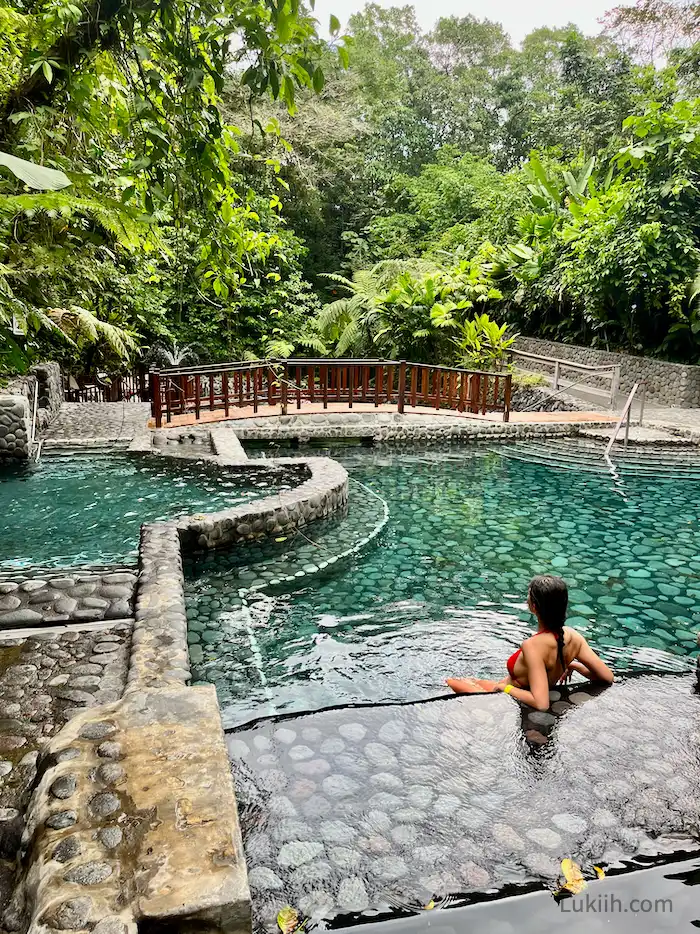
- Monteverde – another town in the Arenal region that’s famous for its several cloud forests, where clouds hang at lower altitudes around the canopy level, giving the forests a mystical atmosphere. Monteverde Cloud Forest is the most famous one.
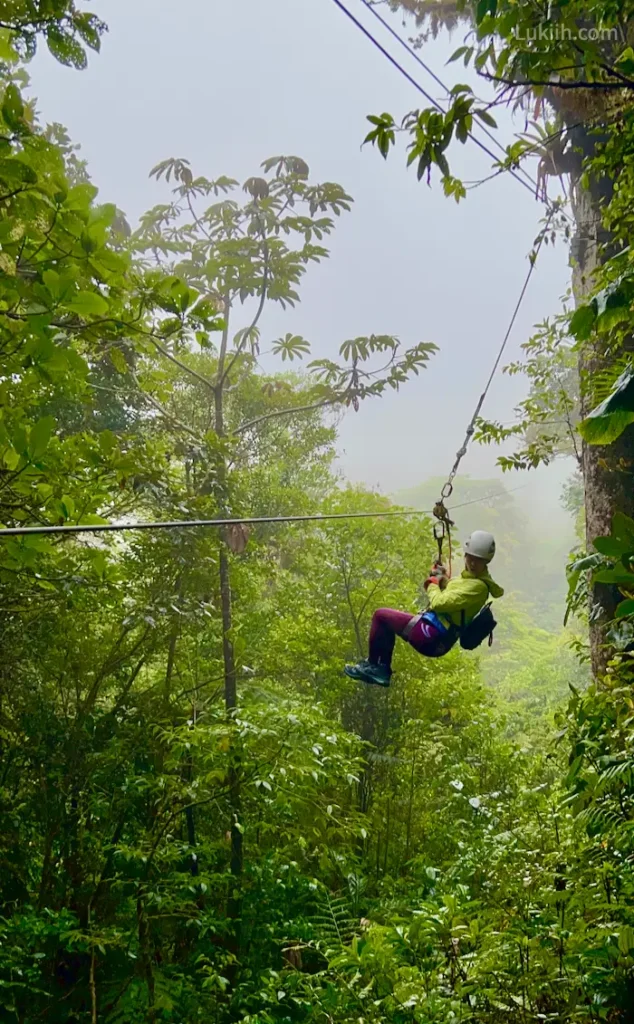
- Manuel Antonio – a coastal town south of the capital city, San José. It’s primarily known for the Manuel Antonio National Park, which has stunning beaches next to lush rainforests.
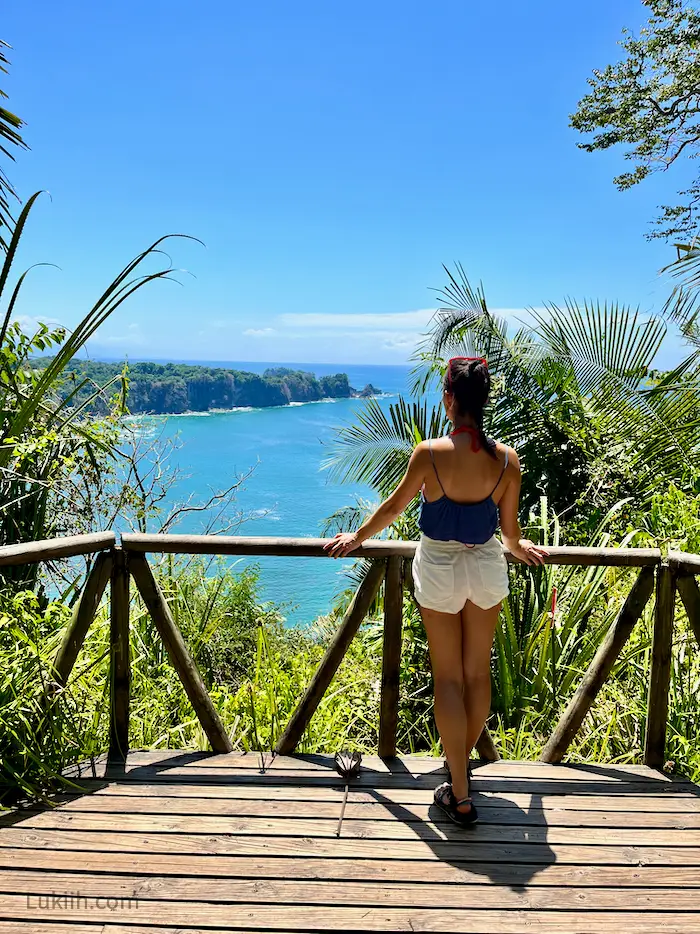
- Nicoya Peninsula Beach Towns – Costa Rica’s Nicoya Peninsula is home to several well-known beach towns, including Santa Teresa, Sámara, Nosara, and Puerto Viejo. They each offer different vibes (e.g., Nosara is known for surfing and wellness, Puerto Viejo is known for its party scene).

- National Parks – Costa Rica has remote parks with incredible biodiversity. Tortuguero National Park is called “Land of the Turtles” and is best known for its sea turtle nesting. National Geographic called Corcovado National Park “the most biologically intense place on earth”.
I visited all the places above except for the national parks, which are more difficult to get to. Here are my honest opinions:
- La Fortuna – La Fortuna is a great town for visitors new to Central America. It’s the gateway to many outdoor activities that are quintessential to Costa Rica (e.g., whitewater rafting, horseback riding, ziplining). I spent a week here and loved looking at the imposing Arenal Volcano every day.
- Monteverde – I’ve seen several cloud forests, but I think it’s worth briefly going to Monteverde to see theirs because of how mystical it feels (they also have one of the best ziplines I’ve ever ridden). It was too cold for how I wanted to spend my vacation, so I was happy with only spending two days there.
- Manuel Antonio – I found Manuel Antonio a bit too touristy and crowded, but I can’t deny that the beaches were genuinely stunning.
- Nosara – Nosara is a quiet, beautiful place and I loved its daily vivid sunsets. I think I would have loved it even more had I been into surfing when I visited (I surf now, but not when I visited). I met several expats and digital nomads who spent weeks and months in the Nicoya Peninsula.
My Costa Rica trip planner has firsthand tips for each destination.
When To Visit
- Dry/Summer season (December-April) – a more popular time to visit. The weather is warm and sunny, and there’s less rain. Temperatures vary between areas, but it is generally a great time to enjoy the beaches.
- Rainy/Winter season (May-November) – a better time to visit if you want fewer crowds, lower costs, and can tolerate the frequent rainfalls in the evenings.
I visited Costa Rica in March and enjoyed warm, sunny days in every place I visited. I was able to go to the beach and enjoy outdoor activities every day without having to check the weather. The only exception was Monteverde, which is persistently colder and rainy due to its higher altitude and location on a mountain range.

How Long To Visit
- 5 days – enough time to visit 1-2 destinations (e.g., La Fortuna and Monteverde but it will feel compressed)
- 1 week – enough time to visit 2 destinations (e.g., La Fortuna and Monteverde in the Arenal region)
- 10 days – enough time to visit 3 of the top destinations (e.g., the Arenal region and the Nicoya Peninsula)
- 2 weeks – enough time to visit 4 of the top destinations (e.g., all of the above plus one more place)
I spent 2 weeks in Costa Rica: 7 in La Fortuna, 2 in Monteverde, 3 in Nosara, and 2 in Manuel Antonio. I recommend:
- If you’re not on a budget – Spend two weeks in Costa Rica because it has a lot to offer and it’s relatively comfortable for Central America.
- If you’re on a tight budget – Spend closer to one week because you can find many similar things (e.g., volcanoes, ziplining, wildlife) in other, more affordable parts of Central America.
🌋 10 Days in Costa Rica: A Unique & Active Itinerary
Entry Requirements
- not required for US citizens visiting Costa Rica for up to 180 days.
- US visitors do not have to pay a tourist fee.
Entering Costa Rica was straightforward for me as a US citizen. I didn’t have to apply for a visa. Some airlines may require you to have a return flight before allowing you to check in.
💰 Logistics
Money
- Many tourist places accept credit cards, but not all. Costa Rica’s economy heavily relies on cash transactions, so bring cash.
- Costa Rican colón and USD are both widely accepted, but you may not get the best exchange if you use the latter.
💰 My Costa Rica Trip Cost: Budget Breakdown (2025)
Getting Around
- Costa Rica has two main international airports:
- Juan Santamaría International Airport (SJO) in San José
- Daniel Oduber Quirós International Airport (LIR) in Liberia
- For long distances, the main ways to get around are by domestic flights, pre-arranged shuttles, car rentals, and public buses (the budget option). For short distances, Uber (only in tourist places), taxis, and tour transports are available.
Official taxis in Costa Rica are red cars with a yellow triangle on the side.
I mostly traveled around Costa Rica by pre-arranged private and shared shuttles, taxis, and Uber. I took one domestic flight, but in retrospect, I wish I had done more flights and fewer shuttles because the transportation time can add up. I considered renting a car since I was covering large distances but decided against it because the roads aren’t great and cell signal isn’t guaranteed while approaching certain touristy areas.
💊 Safety
Health
- generally safe to drink in most developed districts, but many accommodations, tours, and restaurants will provide bottled water regardless.
- disease-carrying mosquitoes are prevalent, so bring bug repellent (I use this repellent lotion).
I didn’t have any health-related issues in Costa Rica and recommend taking some precautions:
- Tap water – I drank tap water in most places with no issues. I also brought my reusable water bottle to refill at restaurants and my hotel, but if you have a sensitive stomach or aren’t used to drinking tap water outside your country, consider drinking bottled water.
- Mosquitoes – I’m a mosquito magnet, so I got bites everywhere I visited except in Monteverde. My accommodation in Manuel Antonio was right next to the national park, and that’s where I encountered the most aggressive mosquitoes.
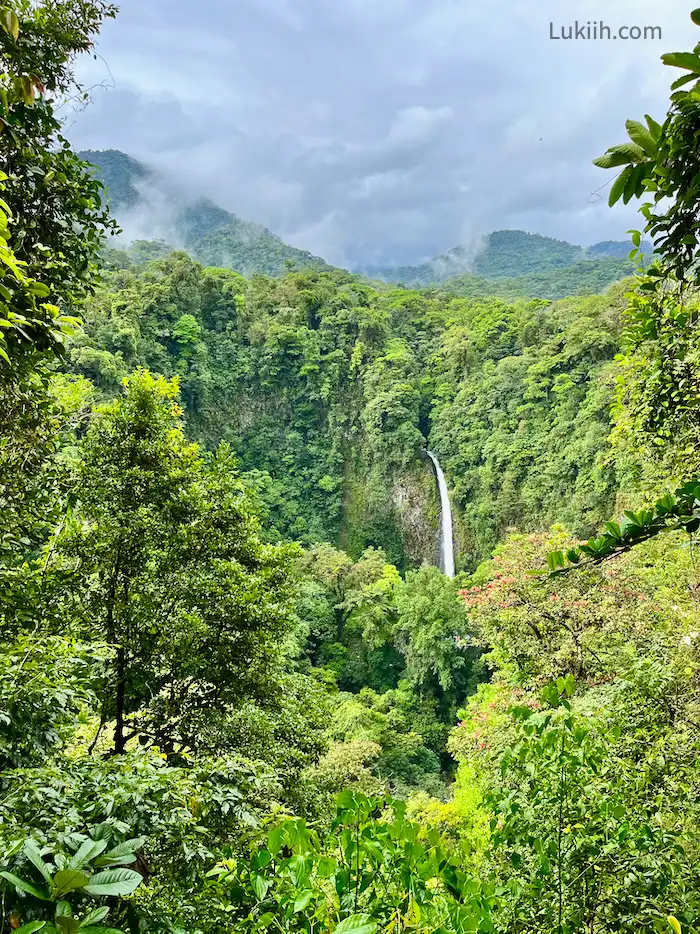
Crime
- Costa Rica is considered a safe place to visit for tourists as long as you stick to well-known areas.
- The country has a travel advisory level of 2 per the US government.
- It’s ranked #58 out of 163 safest countries by the Global Peace Index (for reference, the US is ranked #132).
- Some typical scams to watch out for include:
- The overpriced or unlicensed tour scam – book with a reputable platform like Viator, which is what I use
- The currency exchange scam – double check your change
- Distraction scams – stay vigilant, especially if someone bumps into you or spills something on you
Costa Rica is known to have one of the best tourism infrastructures in Central America and is generally considered a safe destination to visit. That said, there have been reported cases of attempted tourist robbery (even at gunpoint) in less well-known areas, so stay vigilant at all times.
🌍 Culture
Language l Food l What To Wear
Language
- Spanish
- not widely spoken (only about 10% of locals speak it)
Given that tourism is Costa Rica’s #1 industry, you’ll have no trouble navigating the country with just English as long as you’re visiting tourist areas. I speak conversational Spanish and found that it wasn’t necessary to get around. Knowing a little bit of Spanish primarily helps with establishing friendlier interactions with locals.
Food
- gallo pinto (rice and beans, often served with eggs, tortillas, and sour cream)
- casado (hearty plate with rice, beans, plantains, salad, and a protein, usually chicken, beef, fish, or pork)
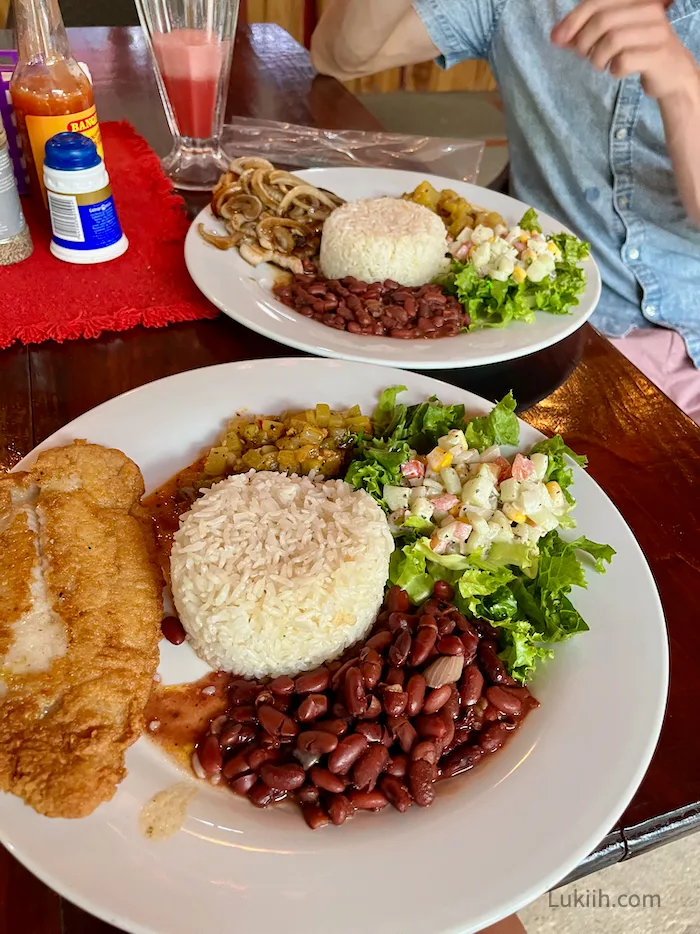
I ate a ton of casado when I was in Costa Rica, and highly recommend it. They’re not only cheap and delicious, but I also thought they were generally well-balanced. I also highly recommend eating a ton of fruit (ask a local what’s in season) in Costa Rica. It was one of my favorite places to drink guanabana (soursop) juice.

What To Wear
- What to wear – Costa Rica has a tropical climate. It’s almost always warm or hot year-round, so pack lightweight summer clothes. If you’re visiting during the wet season, wear quick-dry clothing. Don’t forget a swimsuit if you plan to visit a beach or waterfall, which the country has plenty of.
- How locals dress – They typically dress casually and in non-fancy clothes. Many wear jeans, a jacket, and a T-shirt, even in the heat.
I mostly wore summer clothes (e.g., shorts, swimsuits, and rompers) in Costa Rica and only had to wear long pants and a rain jacket when I was in Monteverde.
A comprehensive packing list is included in my Costa Rica trip planner.
💡 Miscellaneous Tips
Other practical observations I made during my trip:
- “Pura vida” concept – One of the most common phrases you’ll hear in Costa Rica is “pura vida,” which translates to “pure life.” It’s a way of life for Costa Ricans and the phrase is used to mean many things, usually to express optimism and appreciation.
- Roads are not great – Despite Costa Rica being one of the wealthier countries in Central America, they’re notoriously known for bad public roads. Unless you plan to take domestic flights, do not underestimate the many hours you have to budget to get from one region to another in Costa Rica. Google Maps time estimates are rarely accurate from my experience.
- Entrance fees are common – Unlike many other countries in Central America, expect to pay for most things in Costa Rica. The country has invested a lot in tourism, which means that many national parks, beaches, and attractions have an entrance fee.
Costa Rica Trip Planner 2025
Make planning easier with my flexible, research-backed travel planner—shaped by real experience. It has:
- Up-to-date travel info
- A well-curated itinerary
- Practical, firsthand insights & tips
- A simple budget tracker
- A starter packing list
- Fully customizable sections
Built in Notion, this is the tool I personally use to plan every trip. I genuinely love it and creating a Notion account is free.
Lists by Lukiih is a small site I fund myself. Downloading my trip planner is the best way to support me and keep it running—thanks!

Costa Rica Travel Guides
- 🇨🇷 Planning a Trip to Costa Rica: 12 Practical Things To Know
- 🌋 10 Days in Costa Rica: A Unique & Active Itinerary
- 💰 My Costa Rica Trip Cost: Budget Breakdown (2025)
- 🌋 La Fortuna Guide: Top Things To Do + 3-5 Day Itinerary
- 🌳 Monteverde Guide: 2-3 Day Itinerary + 7 Great Things To Do
- 🏄🏻♀️ Nosara Travel Guide: 8 Best Things To Do + Itinerary
- 🌋 Arenal Volcano Horseback: My Honest Review & Tips
- 🌊 Whitewater Rafting in Río Sarapiquía: My Honest Review & Tips
- 🔥 Hot Springs in La Fortuna: My Honest Review & Tips
- 🌋 Místico Arenal Hanging Bridges Park: My Honest Review & Tips
